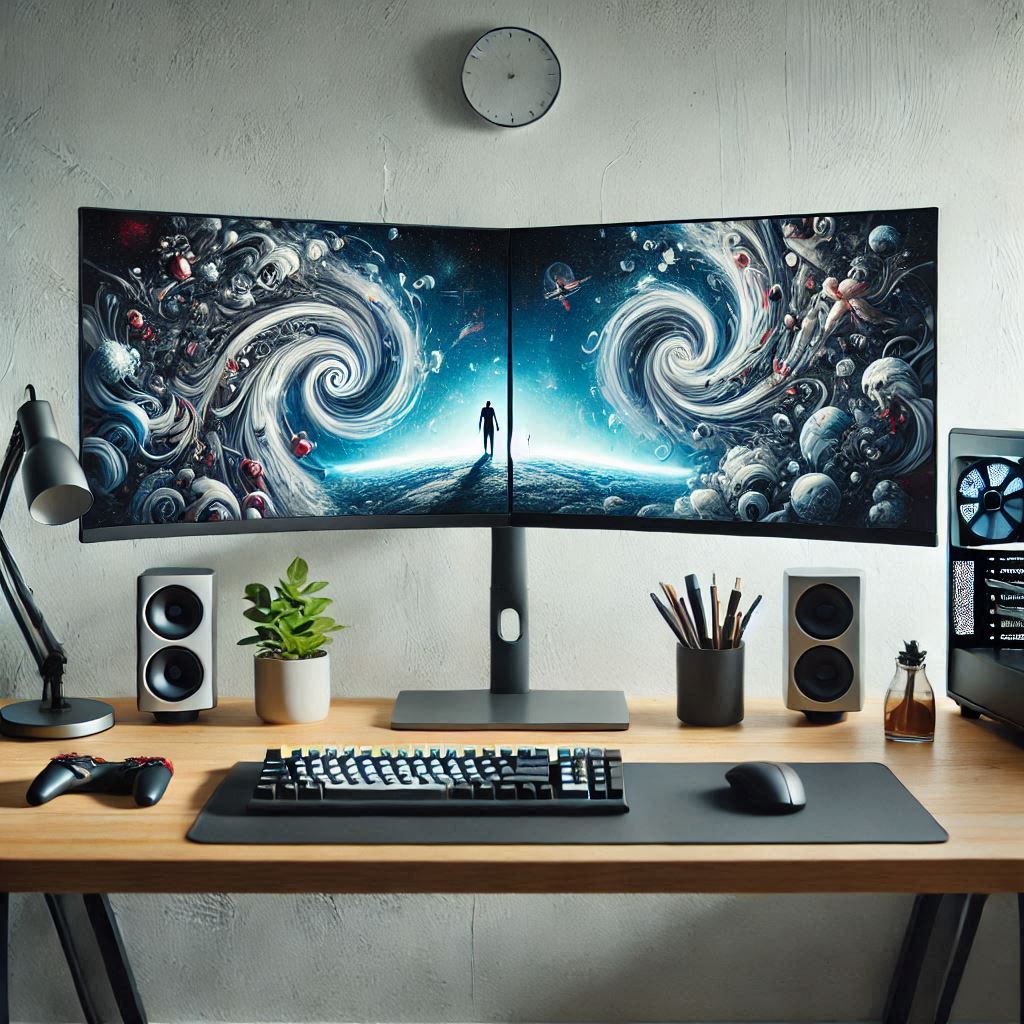Setting up a dual monitor workstation can significantly boost productivity, enhance your work experience, and make multitasking a breeze. Whether you’re a remote worker, gamer, or creative professional, a dual monitor setup allows you to work smarter and more efficiently. Here’s a step-by-step guide to help you set up your dual monitor workstation seamlessly.
1. Choose the Right Monitors
Before you dive into setup, select monitors that suit your needs. Consider the following factors:
- Size and Resolution: Monitors of the same size and resolution ensure a consistent experience.
- Refresh Rate: For gamers or video editors, higher refresh rates (e.g., 144Hz) are ideal.
- Connectivity: Ensure your monitors have compatible ports like HDMI, DisplayPort, or USB-C.
2. Check Your Hardware Compatibility
Ensure your computer can support dual monitors. Most modern desktops and laptops can handle multiple displays, but check your GPU or motherboard specifications to confirm. Look for the following:
- Available display ports (e.g., HDMI, DisplayPort, DVI).
- Multi-monitor support in your GPU driver settings.
3. Gather the Necessary Equipment
You’ll need the following items:
- Two monitors
- Monitor cables (e.g., HDMI, DisplayPort, or VGA)
- A monitor stand or mount (optional for better ergonomics)
- A compatible docking station if using a laptop with limited ports
4. Position Your Monitors
Proper positioning can prevent strain and maximize comfort. Here’s how to do it:
- Alignment: Place the monitors side by side with their top edges aligned.
- Viewing Angle: Ensure the screens are at eye level and about an arm’s length away.
- Orientation: Decide between landscape or portrait mode based on your workflow.
5. Connect Your Monitors to the Computer
Follow these steps to connect your monitors:
- Turn off your computer.
- Plug the cables from each monitor into the appropriate ports on your computer or docking station.
- Power on the monitors and the computer.
6. Configure Display Settings
After connecting the monitors, configure your display settings:
On Windows:
- Right-click on the desktop and select Display settings.
- Identify the monitors by clicking Identify.
- Rearrange the monitors by dragging them to match their physical placement.
- Choose your preferred display mode:
- Duplicate: Displays the same content on both screens.
- Extend: Spreads your desktop across both monitors.
- Second Screen Only: Uses only the second monitor.
- Adjust the resolution and scaling if needed.
On macOS:
- Go to System Preferences > Displays.
- Click Arrangement and drag the monitors to align them virtually.
- Check or uncheck “Mirror Displays” based on your preference.
7. Optimize Your Workspace
- Cable Management: Use clips or cable sleeves to keep cords organized.
- Lighting: Ensure adequate lighting to reduce eye strain.
- Ergonomics: Adjust your chair and desk height for a comfortable setup.
8. Test and Troubleshoot
Verify that both monitors are functioning correctly. If you encounter issues:
- Check cable connections.
- Update your GPU drivers.
- Restart your system.
- Consult your computer or monitor manual for additional guidance.
Final Thoughts
A dual monitor workstation is a game-changer for productivity and workflow efficiency. By following this guide, you’ll have a comfortable, functional setup in no time. Once everything is in place, take some time to personalize your settings and enjoy the enhanced workspace!
